Any seasoned dog owner will tell you that having a canine companion is a big investment. Not only do you need to invest money into providing your pup with a good life, but you need to invest your time.
Caring for a dog is much like caring for a young child. You have to feed them, pick up their poop, train them, and give them all the love you can. Unfortunately, not everyone has the ability to dedicate every waking hour with a pup.
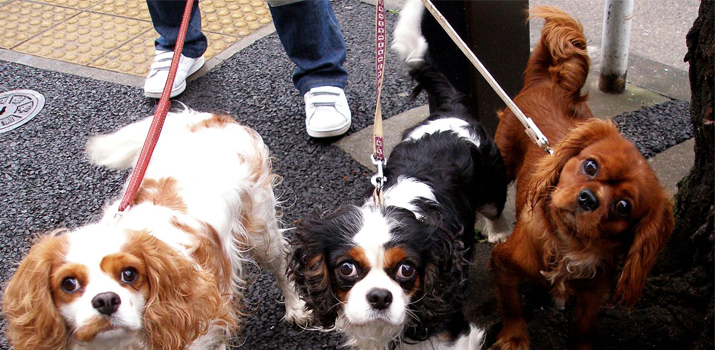
Work and family life easily gets in the way. But does that mean you can't get a dog?
While all dogs require some personal time and attention, there are many breeds out there that are a bit more low-maintenance than others. These dogs let you enjoy the benefits of companionship with a lot less effort.
What is a Low Maintenance Dog?
Low-maintenance dogs are perfect for those with busy schedules. They're also a great option for first-time dog owners who want a pup that's easier to care for.
Generally, these dogs have traits that are easy to work with. You won't have to spend your entire day making sure that they're safe and happy.
It should be noted that there's no such thing as a maintenance-free dog.
You will need to put in the effort, especially during their puppy years. You should never leave your dog alone for extended periods of time.
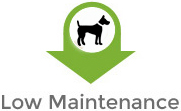
Even the most independent canine will start to develop anxiety and behavioral problems if you leave them alone for most of the day.
You'll still need to pick up their messes, provide play time, and enforce training. In fact, training is key here.
One of the best things about a low-maintenance dog is that they're relatively easy to train. During the first year of their life, you need to spend time enforcing your rules and making sure that your pup doesn't develop any unwanted behavioral issues.
If you do it right, it'll be smooth sailing from there.
Traits to Consider When Looking for a New Dog
There are a lot of things to look for when you're on the hunt for that perfect pup to adopt. The goal is to find a dog with minimal needs.
Typically, it's easier to determine a dog's traits if they're a purebred. Purebred dogs have a long lineage that you can track down.
With that being said, it is possible to find these traits in mixed dogs. Speak with the breeder or adoption facility to get a better idea about the needs of the dog you're interested in. Here are some things to look out for.
Overall Temperament
It's much easier to deal with a dog that gets along with everyone. Some dogs are naturally friendly creatures that are kind to other dogs, kids, and seniors.
However, others are always on the defense. If you're looking for a low-maintenance dog, see how a pup interacts with others.
Grooming
Every dog will need to have their nails clipped, their hair brushed, and their teeth cleaned. Some dog breeds require much more than that. Long-haired breeds go through deep shedding multiple times a year.
This requires you to spend time getting rid of their undercoat.
Energy Levels
Low-energy dogs are the best if you don't want to spend a lot of time on exercise and play. All dogs will require daily exercise. Some will want to spend the entire day running around.
Stick with a lazier dog breed if you don't have the time to go for multiple walks each day.
Training
Your dog will need to be trained when they first get home. You'll need to teach them where to do their business, how to listen to you, and much more.
Some dogs are more independent than others. This can make it difficult to teach them training techniques. If you want a dog that's easy to care for, find one that can pick up commands quickly.
Social Needs
One of the biggest problems that busy dog owners face is spending enough time with their pooch.
Dogs need social interaction. Some breeds can't stand being left alone for a few minutes. If you work all day, find a pup who doesn't mind alone time.
Related: Worst Dog Breeds for Seniors
11 Low-Maintenance Dog Breeds
#1. Chihuahua
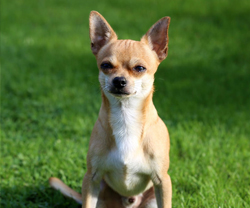
Chihuahuas have a reputation for being little fireballs. While they do have short bursts of energy, they don't really need much exercise.
They're not as hyperactive as other breeds their size and won't have a problem lounging around all day long. This habit becomes more frequent the older the dog gets. When it comes to grooming, there's not much to do with short-haired Chihuahuas.
One of the greatest things about these pups is their size. These small dogs can be taken virtually anywhere. However, if you want a pup that you can leave alone, it's important that you don't baby them. You'll need to do proper training to make sure that they're well-behaved around people.
While they do have a penchant for following you around, you can put a stop to this behavior with adequate training.
#2. Basset Hound
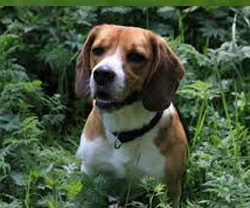
Basset Hounds are medium-sized dogs with floppy ears and droopy faces. They have very sensitive personalities. As a result, they don't respond well to scolding.
You'll have to train them gently with plenty of treats to get them to do what they're supposed to do. Once they have the techniques down, they'll remember them. They're fiercely loyal to their owners and love affection.
What makes Basset Hounds low-maintenance is their energy levels. These dogs are very lazy. While they do enjoy a good walk every now and again, you're more likely to find them lounging around. Most dogs won't even get up when their owners return home.
#3. Dachshund
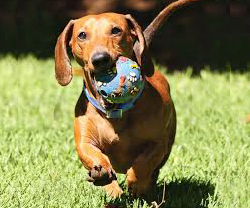
These small bundles of joy are great in many different types of living conditions. If you live alone in an apartment, your Dachshunds will adapt well.
If you have a big family with many children, your Dachshund will befriend them and have fun. They're pretty much down for anything. They'll play and exercise when you want them to and relax when you don't.
Dachshunds will nap throughout the day if there's nothing else to do. They only need a moderate exercise to stay healthy. With their long and skinny bodies, too much exercise can actually do more harm than good.
#4. Pug

Pugs are known for their unique personalities. With their iconic squished faces, you'll have a lot of fun just watching your dog run around.
While they have short hair, it does shed. Luckily, the hair is relatively easy to pick off of furniture. As for exercise, Pugs aren't the most energetic. They'll be fine with a walk or two each day. Other than that, they'll spend most of their time napping or finding ways to keep themselves entertained.
If you provide them with ways to stay stimulated during the day, you can avoid boredom and behavioral problems. The one downside to Pugs is their face. Their unique skull shape can lead to heavy breathing and snoring. As long as you don't exercise them too much or expose them to high temperatures, they'll be fine.
#5. Havanese

Havanese are incredibly dedicated to their owner. If you want a dog that cuddles up to you every night and sits on your lap every moment they can, a Havanese is for you.
With this trait, you're going to have to take some extra steps to make sure that they're entertained while you're gone. You'll also need to instill proper training and socialization at a young age.
When it comes to grooming, Havanese pups are pretty easy to take care of. They have long hair but it does not shed. The most you'll need to do is regular brushing to avoid matting.
#6. Newfoundland
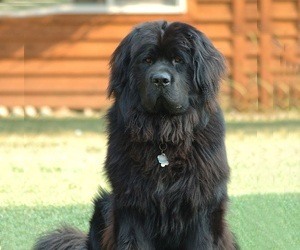
Newfoundland dogs were originally bred to work. However, modern pups are just another member of the family. If you have kids, the Newfoundland is a great option.
They're very affectionate and loyal. They'll even look after small children. The breed has been known to rescue people and dogs out of potentially dangerous situations. One thing to note is their size.
They can weigh well over 100 pounds. Not only that, but they have a thick coat of fur that you'll need to maintain. However, they are very low energy. You won't have to work this dog to keep them healthy.
They're also very calm and learn training well. The downside to Newfoundlands is their lifespan. Most only live between eight and ten years.
#7. French Bulldog
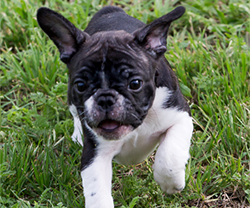
While many people are intimidated by the muscular and compact build of the French Bulldog, they're really just big old sweethearts.
French Bulldogs are playful creatures that are very easy to please. They're a joy to be around and very easy to care for.
These dogs spend most of their day napping. Some personal attention is required, but they're fairly independent when you're not around.
With their stocky builds, they don't need a ton of exercise. Too much physical activity will wear them out pretty quickly. French Bulldogs are also quite intelligent. With proper training, these dogs will thrive in just about any environment.
#8. Mastiff
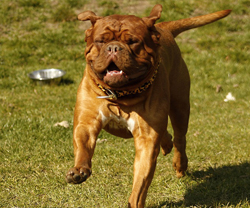
If you want a behemoth as a pet, consider the Mastiff. These dogs can weigh upwards of 220 pounds. While this may seem like a handful to deal with, Mastiffs are relatively docile and lazy.
They can usually be found lounging on your couch. The main issue you're going to have to deal with is teaching your dog to not get on your furniture if you don't want them to be there.
Due to their size, Mastiffs don't have a lot of physical endurance. Too much exercise will cause them to get tired quite fast. As they get older, they'll spend more and more time just taking naps and fawning for your affection when you're home. Another unfortunate thing about Mastiffs is their short life expectancy. They only live between six and ten years.
#9. Labradoodle
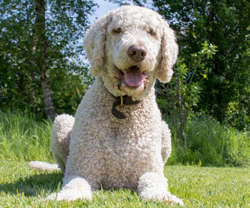
Labradoodles are a great option for first-time dog owners. They're known for being very smart and easy to train. They pick up commands easily.
These dogs are also known for being very understanding. Most don't cause issues when their owners are not home. They do require some exercise. Labradoodles have lean bodies that need to be maintained. However, a few intense play sessions should be enough to wear your pup out.
One of the best traits of these dogs is their fur. They're hypoallergenic and don't shed. They also don't produce a ton of dander. As a result, they're perfect for allergy sufferers.
#10. Greyhound

It is true that Greyhounds are one of the fastest breeds around. You'd think that an athletic dog would constantly need exercise.
In reality, Greyhounds love to spend their days lounging around. They do need daily walks and the opportunity to get a good run in. However, running is not something they need to do every single day.
These dogs are also quite calm. It's rare to hear a Greyhound bark or make a ton of noise. They usually only do this when they're stressed out. Greyhounds are also very intelligent creatures. They pick up training relatively well. To avoid timidness around strangers, make sure that you socialize your pup well when they're young.
#11. Cavalier King Charles Spaniel

You may not know these dogs by name, but you have probably seen them around. They have a puppy-like appearance throughout their life.
They're a small breed, so they adapt well to many environments. These dogs can thrive with apartment living. One great trait about Cavalier King Charles Spaniels is their loyalty.
They're very lovable and enjoy snuggling up to their owners after a long day. While some smaller breeds are difficult to train, Cavalier King Charles Spaniels are not. You will have to be gentle. They don't respond well to scolding or yelling. If you establish training early on, you shouldn't have any major behavior issues.
Conclusion
All of these breeds are great for people that don't have a ton of time or those who aren't experienced in the art of dog ownership.
Their low-maintenance traits make them easy to raise. They'll be fine by themselves and give you all the love you need when you get home at the end of a long work day.
Also Read:

